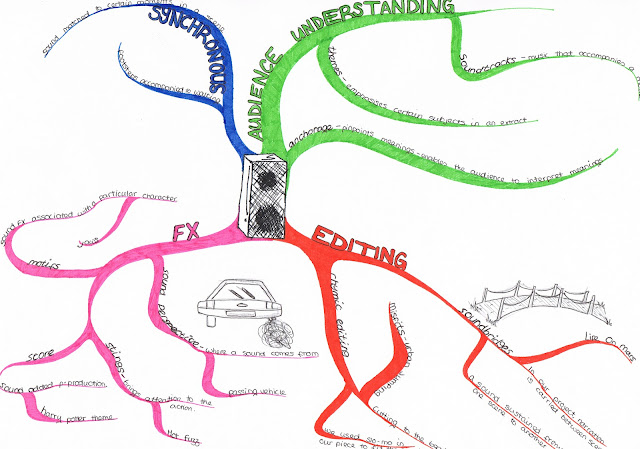Today we went into a lot more detail in sound, thinking about how sound is used in films and TV dramas as well as how we are going to use it. We learnt a lot of technical terms and how they related to our projects.
- SOUND BRIDGE - this is the first term that we learnt. This is when sound is carried over from one scene to another. It can be diegetic or non diegetic, added post production or during filming. A good example is when you hear someone's voice start up at the end up the last scene before cutting to the next scene. For a few seconds, the voice behaves more like a voiceover than just a sound bridge. Sound effects such as footsteps can also be used as sound bridges along with the music of course.
- RHYTHMIC EDITING - this is when a piece of film is edited to fit the rhythm and pace of the backing music. This is very effective when used during moment of high tension with a fast paced backing track.
- SOUND PERSPECTIVE - this is in relation to the apparent distance and position of sound. For example, if a plane flies over head during a piece of film, the sound may get louder in one speaker, then move to a second speaker where it gets quieter, giving the impression that it is going past.
- THEME - this is the main melody in the composition. It is repeated throughout the piece of film and is very emotionally is very charged, such as the tune played at the start of each Harry Potter film because it represents the film itself and the excitement of being in the cinema watching it. Another example is the bass noises used repeatedly in Shutter Island, these represent the film as a whole.
- MOTIF - this is very much like a theme in that it is a repeated melody, however it represents a character or moment rather than a feeling. In a single film you may get a different motif for each character. One of the most well known examples of a motif is Jaws, the repeated melody symbolising the appearence of the shark. Another great example is Mystique's theme from X Men, the violin riff that is played everytime she is approaching.
Below is a mind map that my group and I have made to present these sound terms as well as some others and how they relate to our own project.

No comments:
Post a Comment